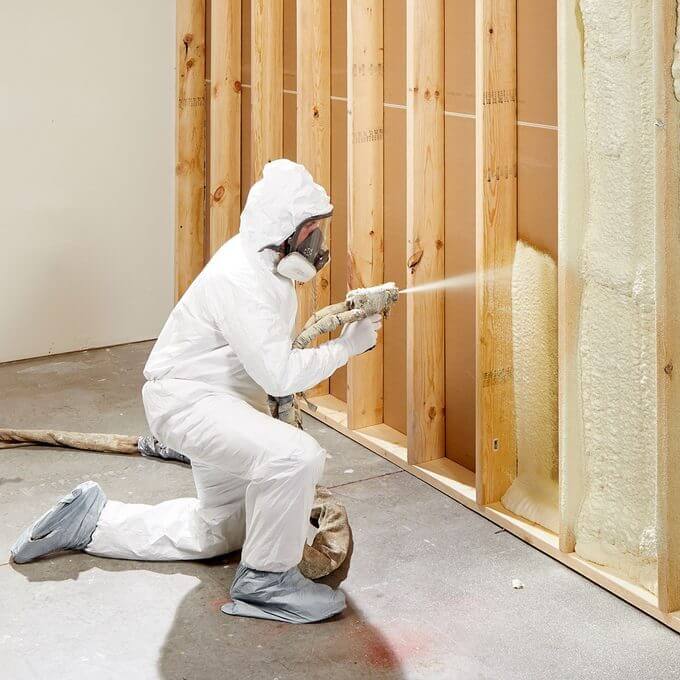Don’t let your money go down the drain due to high energy bills. You’re in the right place to understand the importance of basement insulation service. It’s a game-changer, not just for your comfort, but your wallet too.
We’ll break down the basics, the benefits, types of insulation, installation processes, and common mistakes.
So, let’s dive in and learn how proper basement insulation might just be the answer to your energy-saving prayers.
Understanding Basement Insulation Basics
Before you start insulating your basement, it’s crucial to grasp the basic principles of basement insulation. Understanding insulation costs and material selection can significantly impact your insulation strategy.
Insulation costs vary depending on the material used and the square footage of your basement. Typically, fiberglass, mineral wool, and spray foam are common selections. Each has different R-values, representing their thermal resistance, impacting their effectiveness and cost.
Fiberglass is often the cheapest, yet least effective. Spray foam, while pricier, provides excellent thermal resistance and soundproofing qualities. It’s also vital to consider the moisture barrier properties of your selected material.
Therefore, before diving into your insulation project, thoroughly analyze both insulation costs and material selection to ensure a cost-effective, efficient basement insulation strategy.
Benefits of Insulating Your Basement
Why should you consider insulating your basement?
Primarily, the answer lies in two key areas: Energy Savings and Health Benefits.
By insulating your basement, you’re creating a barrier that significantly reduces heat transfer, thus saving energy. Insulation keeps your home warmer in the winter and cooler in the summer, reducing the need for excessive heating or air conditioning. This directly translates into substantial savings on your energy bills.
Moreover, a well-insulated basement helps in maintaining a steady indoor temperature, preventing the formation of condensation. This is crucial in preventing the growth of mold and mildew, which can cause health issues.
Accordingly, insulating your basement offers not just financial but also health advantages, making it a smart and practical choice.
Different Types of Basement Insulation Services
While you’re considering the benefits of insulating your basement, it’s also crucial to understand the different types of basement insulation service available to you. This involves an insulation materials comparison to determine the most suitable choice. Here are five types you should know:
- Blanket Insulation: It’s cost-effective and easy to install, but not the best choice for irregularly shaped areas.
- Spray Foam Insulation: Although pricier, it provides excellent thermal resistance and seals leaks effectively. There are two types of spray foam: closed cell spray foam and open cell spray foam.
- Rigid Foam Insulation: It offers high insulating value per inch, but installation can be challenging.
- Loose-Fill Insulation: It’s perfect for irregular spaces, but may settle over time.
- Reflective Insulation: Ideal for reducing radiant heat, but isn’t very effective against other types of heat loss.
Understanding the cost-effectiveness of insulation types helps you make an informed decision.
The Process of Basement Insulation Installation
Now that you’re familiar with the types of basement insulation service, let’s dive into the installation process.
Initially, you must determine the insulation materials suitable for your basement’s conditions. Factors such as moisture levels, desired R-value, and your budget play a critical role. Installation costs can vary greatly based on these factors and the insulation type, such as spray foam, rigid foam, or blanket insulation.
Once you’ve chosen the insulation, the installation process includes cleaning the basement walls, using a vapor barrier if necessary, and applying the insulation uniformly. Sealing gaps and cracks is vital for preventing heat loss.
After installation, inspect the insulation regularly for signs of wear or water damage to ensure its effectiveness.
Also Read: What Insulation Is Best for Basement?
Common Basement Insulation Mistakes to Avoid
Even though you’ve got the basics down, it’s crucial that you’re aware of common mistakes in basement insulation to avoid compromising its effectiveness. Improper insulation practices can cause more harm than good, leading to energy inefficiencies or structural damage.
Here are some key errors to avoid:
- Choosing Insulation Material Flaws: Not every material suits all basement conditions. Choose insulation material based on your local climate, moisture levels, and basement construction.
- Incorrect Installation Practices: Failure to install insulation properly can lead to gaps, causing heat loss or moisture problems.
- Ignoring Vapor Barriers: These prevent condensation, which can lead to mold and structural damage.
- Overlooking Insulation R-Values: Higher R-values provide better thermal resistance. Don’t skimp on this.
- Failing to Inspect Regularly: Regular checks can catch issues early, preventing costly repairs.
Conclusion
Don’t let your basement be an energy drain. Arm it with the right insulation, and you’ll turn it from a chilling liability into a warm asset.
With careful selection, precise installation, and diligent error avoidance, you’ll not only create a cozy haven but also shave off those pesky utility bills.
Remember, a well-insulated basement isn’t just a luxury, it’s a necessity. Make a smart move, insulate, and let your basement return the favor. Schedule your basement insulation today with Spray Foam Experts.






